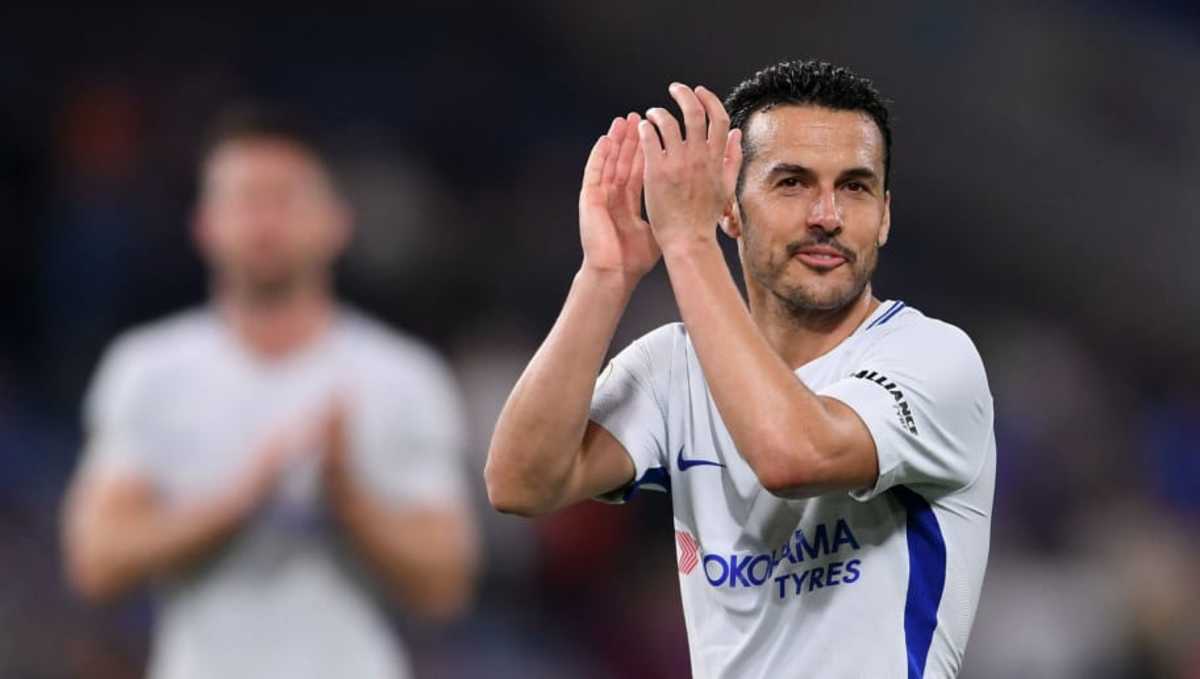Diamond in the Rough: Why Pedro Could Finally Thrive Under Maurizio Sarri at Chelsea

When Dries Mertens was signed at Napoli, he was known as a somewhat, but not especially, prolific playmaker, having collected 18 goals and 20 assists across competitions in his final season with PSV Eindhoven.
Bought in the same summer as Gonzalo Higuain - as well as Jose Callejon, Jorginho, Faouzi Ghoulam and Raul Albiol, making it a quite remarkable haul - the Belgian was used as the Argentine's foil on the left.
And he was effective in his ancillary role, providing a reasonable 13 goals and 12 assists to Higuain's more celebrated collection of 22 and 11 respectively. This trend continued, though the fluctuations tended to point downwards rather than up, until the former Real Madrid striker abandoned Naples for Turin.
With his key man gone after just one season, and as many 38 goals required to be replaced, Maurizio Sarri chanced his arm on Ajax's promising centre forward Arkadiusz Milik. However, after a decent initial acclimatisation, the Poland international ruptured his cruciate ligament in October, and was out for five months - he would repeat this in the exact same fashion the following season.
With their strikeforce suddenly depleted, Sarri turned to the only man he thought capable of filling the role - Mr. Mertens. Through a combination of happenstance, luck and expert tactical and man management, the Italian was able to morph the winger into a formidable number nine, and a phenomenal goalscorer.
Using 'Sarrismo', the endearing nickname engendered onto the Italian's style of play, Maurizio circumnavigated the need for a focal point up front by constantly shifting the point of attack, and taught his players to be unabashedly brave in their possession and intent.
With Callejon operating as more of an out and out winger on the right, Insigne, thanks to the marauding presence of Faouzi Ghoulam, was allowed to drift inwards alongside Mertens. But it was the trio's ability to retain possession under considerable pressure, and utilise the resulting space to create chances that was so impressive.
This was what Sarri instilled in each of them, alongside a ruthless edge in front of goal, and a confidence to make that lung busting run on a whim.
Observing those three players' characteristics and qualities, they all evoke comparisons and similarities to the Chelsea player in question. At Barcelona, Pedro was a potent finisher, as well as a willing and intelligent runner and playmaker.
Under Pep Guardiola - a man who has repeatedly gushed over Sarri's 17/18 side - in 2010/11, the Spaniard had his best season in a Blaugrana shirt, collecting 22 goals (including the opener in the Champions League final) and 12 assists. Built upon a style which, although dissimilar to Sarri's, required similar traits going forward, Guardiola's men blew opponents away.
At his best, Pedro represented the epitome of what Sarri was seeking to garner from his own front three - expert ball retention, a penchant for rapid interplay and composed finishing when given the chance. However, when Pedro joined Chelsea in 2015, the system in place was not geared towards these strengths.
Of course, it's hard to evaluate his start in west London, considering the turmoil the club were in under Jose Mourinho, and it was therefore understandable that the then 28-year-old struggled to make an impact. Indeed, despite carving out a greater role in Antonio Conte's title winning side of the following year, in which he scored a number of key goals (13 across competitions, to be precise), it was not the Pedro of old.
Whilst he did show a somewhat new side to his game - an ability to create a goal out of nothing, largely from long range - the attack was not choreographed in a way that would capitalise on all of his attacking prowess, with Eden Hazard taking on the brunt of the creative impetus.
Indeed, you could also intimate that Antonio Conte undervalued and undermined Pedro's output for the team by constantly yearning for alternatives, or "upgrades". Contrast that with Sarri's ethos of improving his players with coaching rather than cash, and you can see why a 30-year-old (who turns 31 on the 28th of July) forward of Pedro's ilk would be far more enticing for one manager than the other.
The signs were already there in pre-season against Perth Glory, as irrelevant as that sentence sounds. It was hard to avoid the sudden Neapolitan nature of this Chelsea side, and Pedro's clever run and guarding of the space, before a cute volleyed finish, foreshadowed the possibility of a new dawn.
With a number of high profile names supposedly edging closer to an exit from the 2016/17 champions, making Sarri's final squad for the new season an unknown quantity at this point, it remains to be seen whether he will remain strong to this nurturing ideology.
Pedro showed his rapport with Morata against Perth, but if he was to leave and Hazard was to stay (as futile as this speculation is), you could equally see the fruition of a Napoli-esque front three developing in west London.
It was tried at times last season with Pedro, Hazard and Willian, but the midfield behind them was too pedestrian and lacking incision. With a hypothetical central three of *crosses fingers* Ruben Loftus-Cheek, N'Golo Kante and Jorginho, utilising Sarri's vertical structure, the result could be far more successful.
Indeed, even if it's Morata that stays and Hazard that goes, or both and Sarri's old friend Gonzalo is brought in, there suddenly seems a real place for Pedro in this side that's never been available before. If anyone can exploit that fact, it's Chelsea's new tactician.








